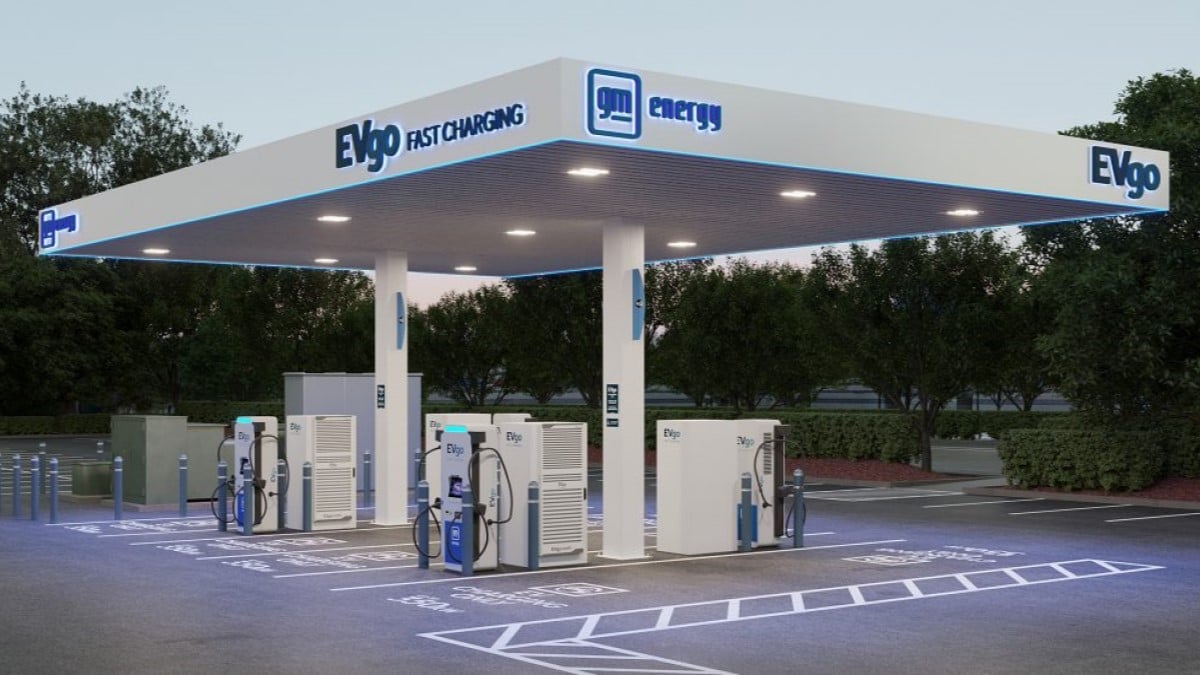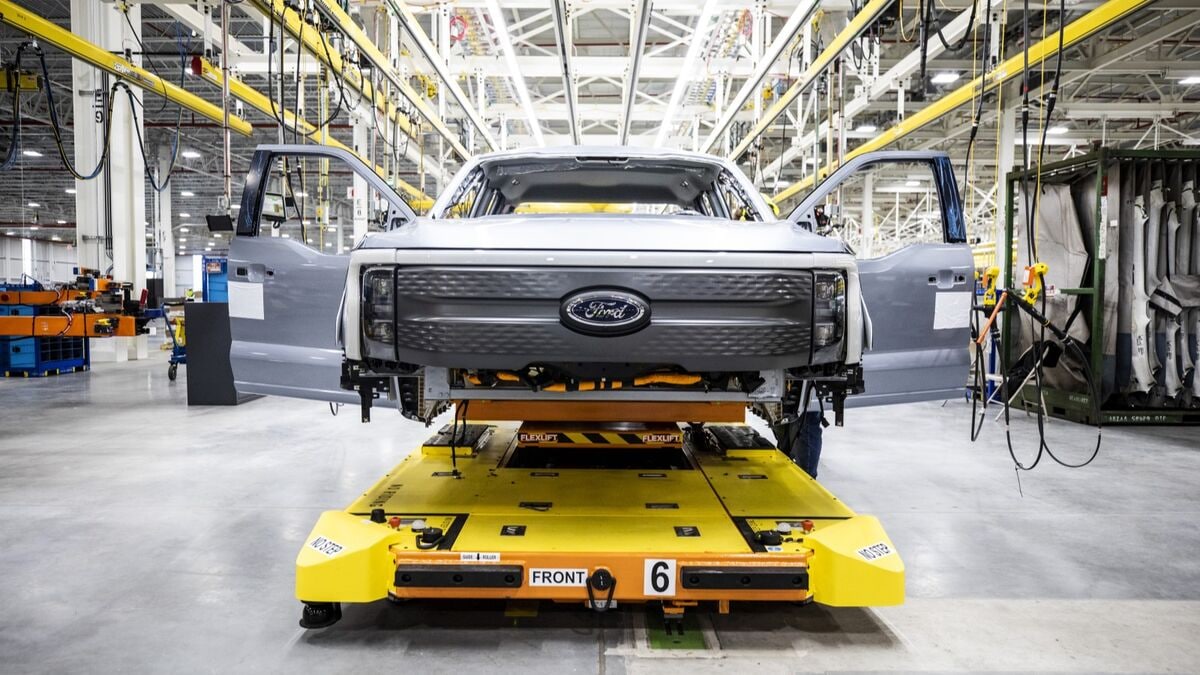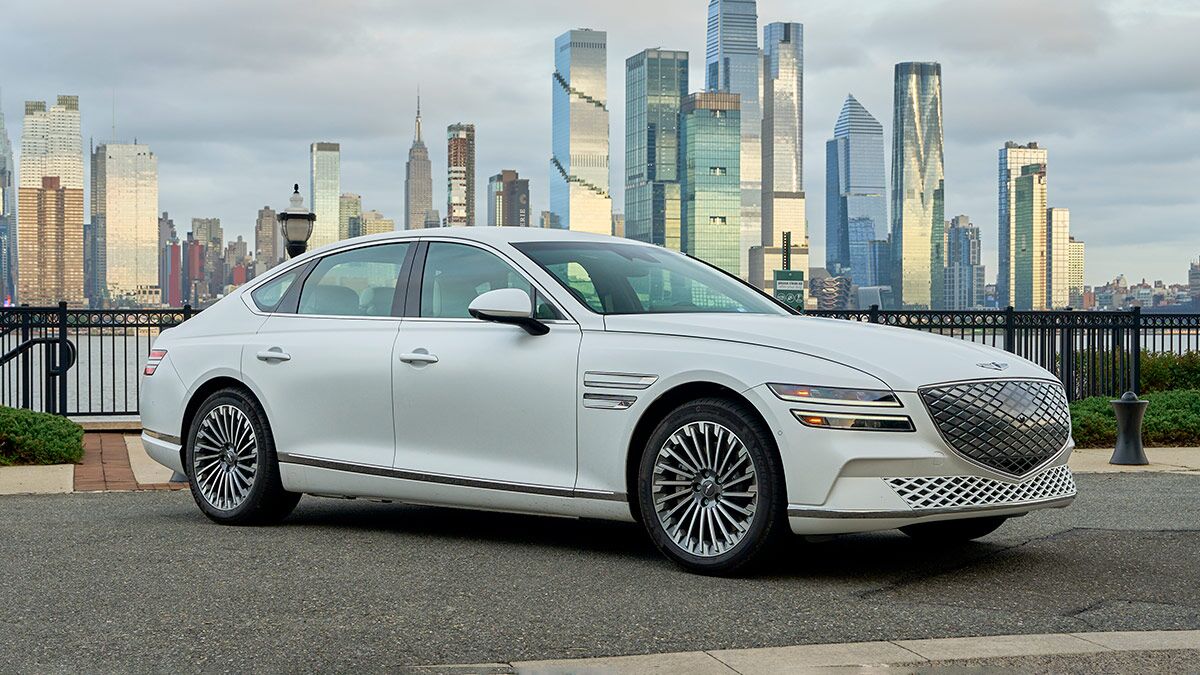When gas-powered cars were new, it took the fledgling auto industry time to figure out how to make fueling up simple. Each car manufacturer had its own ideas. There was no standard gas tank valve and no gas pumps to fit into one.
Early cars often came with something much like a watering can. Early gas stations stored fuel in above-ground tanks. You’d open a valve to pour gasoline from the tank into your can, carry it to your car, and pour it into your gas tank. It was a messy process.
But a few decades into car ownership, America had standardized on a simple process. The modern gas station became a simple, reproducible idea. Cars had a standard gas tank valve, and stations had a standard pump. Canopies protected motorists from the weather while they filled up.
In the early days of electric vehicles, the auto industry seems to be repeating the whole process.
This week, General Motors and charging provider EVgo announced an expanded partnership to build hundreds of new charging stations across the U.S. In renderings, they look very familiar.
Canopies, Pull-Through Designs
“With features such as 350kW fast chargers, ample lighting, canopies, pull-through stations, and security cameras, the flagship stations are poised to set a new benchmark in the EV charging landscape,” GM says.
That pull-through feature may be particularly important to GM. Early EV leader Tesla makes most of its money on compact SUVs (the Model Y) and sedans (the Model 3), rarely seen towing anything. So, it places Supercharger units like parking bollards at the end of parking spaces. Vehicles can face them or back up to them. But a vehicle-and-trailer combination would stick out inconveniently, blocking traffic.
GM, however, makes much of its money on trucks and SUVs powerful enough to tow. Full-size electric trucks like the Chevrolet Silverado EV and Cadillac Escalade IQ may initially sell in small numbers. But they’re likely a sign of what GM expects to sell in large volumes a decade from now.
GM and EVgo’s new stations allow a truck and a trailer to pull through.
“Most flagship stations are expected to feature up to 20 stalls, with select locations providing significantly higher stall counts, ensuring that there are critical charging hubs to best serve the growing number of EV drivers on the road,” the company says. Recharging an electric battery takes longer than refilling a gas tank, so 20 stalls might throughput like 4 stalls at a gas station, at least until solid state batteries appear making charging faster.
Metro Areas at First
They’ll be built “coast to coast, including in metropolitan areas in states such as Arizona, California, Florida, Georgia, Michigan, New York and Texas.”
The first will appear next year, the companies say. They “plan to build a total of 2,850 DC fast charging stalls, with funding reallocated to deliver premium charging experiences for EV drivers at flagship locations.”
They’ll serve as highly visible parts of a nationwide EV charging network that will likely be mostly invisible. For the nation to go electric, we won’t need as many public chargers as gas stations. While almost no one can refill their gas tank at home, most EV charging can be done there.
A recent government study found that, in a mature charging network capable of serving tens of millions of EVs, 96% of chargers could be found in private homes and workplaces.








